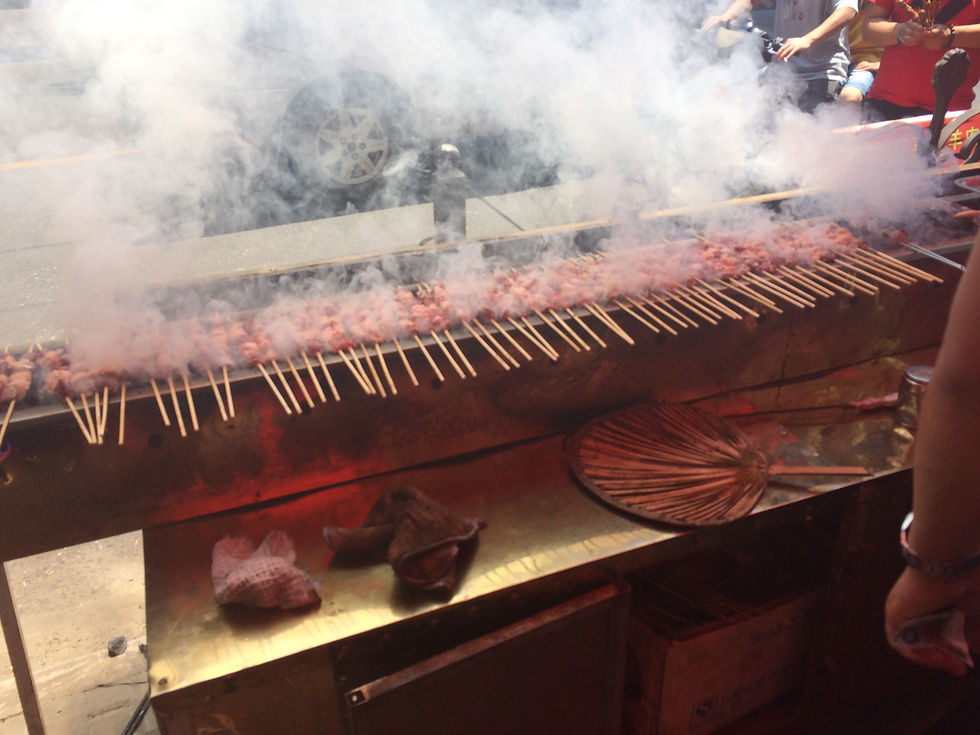Mosques and Markets in Shanghai's Islamic Community
- David R. Stroup
- Aug 4, 2015
- 3 min read
As I've noted before, Shanghai is an international city, and so it's home to all kinds of communities. Shanghai's Muslim community, unsurprisingly, is pretty international. Spending any time near any of the city's seven mosque communities makes that fact apparent. Even the Songjiang Mosque (the city's oldest, dating to the Yuan Dynasty in the 1300s) located on the city's far western edge is a pretty cosmopolitan community. Of the nearly 600 congregants, as many as half may be foreigners, according to the staff on duty during my visit.


In this sense, the city's mosques are fascinating places for cultural interaction. Take, for instance, the Huxi Mosque in the Jing'an area of northern Shanghai. This community is one of the city's most populous mosques. The building is built in a style that resembles North African architecture, and, on a given Friday afternoon, you're likely to find prayer attendees Chinese, Uyghur, Central Asian, Iranian, Pakistani, etc.

It's a pretty vibrant community. A member working at the small prayer goods store at the entrance told me that on most Friday afternoons 1,600 people attend weekly prayers, and the mosque's courtyard overflows into the adjacent alleyway. Unsurprisingly, the Huxi Mosque is one of Shanghai's most visible Islamic communities. In part, the Friday market that usually springs up around the mosque, enhances this repuation. On any given Friday, you're likely to find nearby Aomen Rd. packed with vendors selling raisins and figs from Xinjiang, apricots and dates from Iran, mutton kebabs, carrot and mutton rice pilaf, Central Asian na'an bread, whole roasted chickens, whole roasted leg of lamb, and other various halal food items. The vendors are both Hui and Uyghur, and come primarily from Xinjiang and other places from China's northwest. The market's customers, however, represent a broad swath of Shanghai. Hui, Uyghur, and Central/South Asian Muslims, of course, patronize the market in large numbers. But you're also just as likely to find local Han Chinese on their lunch break, or curious western tourists lugging cameras and snapping photos.




In fact, the market grew so popular, and so large, that it began to become a public safety hazard, was temporarily shut down, and finally reopened in a less trafficed sidestreet nearby (or at least this is what official reports say. There are plenty of reasons why cultural tensions-- not to mention some public discomfort regarding the on-the-spot butchering of mutton that was happening at the market-- led to some of these difficulties).
And the Huxi Mosque Friday market is far from the only one in Shanghai. For instance, the block of Zhejiang Lu that is wedged between Guangdong Lu and Yan'an Lu near the busy People's Square, is a similarly visible enclave. Here, as well, the market provides a space for creating a diverse, transnational Islamic community, as Uyghur bakers share storefronts with Hui restauranteurs and Mongolian Muslim butchers. Despite its relatively small size, the community is instantly recognizable. Crossing the street at Guangdong Lu, a wanderer is immediately hit with the smell of grilled meats and tandoor-oven baked bread, the sight of green and white signs bearing Arabic script and crescent moons, and the sound of Iranian and Uyghur pop songs blaring from the front of restaurants. And within a few hundred meters, the street returns to a typical Shanghai avenue.



The network of markets and mosques is the most visible part of Shanghai's Islamic community, and the nexus they provide for forming shared ties between different groups of believers seems to be an important one. Determining just what these areas mean to the community is something worth digging into more deeply, and something I really hope to be able to do in the coming months. Watch this space.


Comments